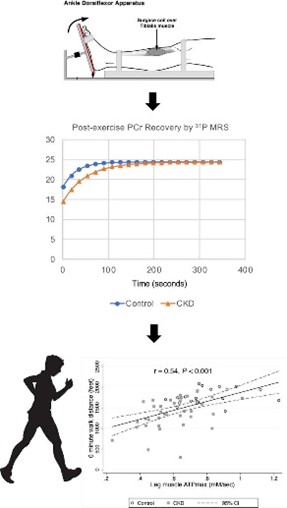MEND: Muscle Mitochondria Energetics in Chronic Kidney Disease
Investigator
what is the MEND Study?
People with kidney disease often have muscle weakness and difficulty with mobility. This can affect physical abilities, independence, and quality of life. Mitochondria are the primary energy-producing structures in muscle cells. Previous studies suggest that kidney disease may disrupt mitochondrial function; however, these studies have mostly been limited to animal models.
The purpose of this study was to measure mitochondrial properties in people who have chronic kidney disease. We used a specialized procedure to do this in one hand muscle and one leg muscle in 77 participants – 53 kidney disease and 24 controls. We also tested their physical performance using the 6-minute walk test.
Results
ATPmax – which represents the maximal mitochondrial generation of energy – was lower in the leg muscle of people with CKD but not in the hand muscle. Oxygen uptake was also higher in people with CKD, suggesting a need for more oxygen to achieve the same amount of work. Our specialized measurements of ATPmax tracked strongly with performance on the 6-minute walk test. These results provide further evidence that mitochondrial impairment is an important potential cause of muscle dysfunction in people with chronic kidney disease.

Findings
This study provides further evidence that kidney disease disrupts the body’s energy-producing cells to cause muscle weakness.
WHO DO I CONTACT FOR MORE INFORMATION?
Laura Curtin
206-221-3938
Publications




